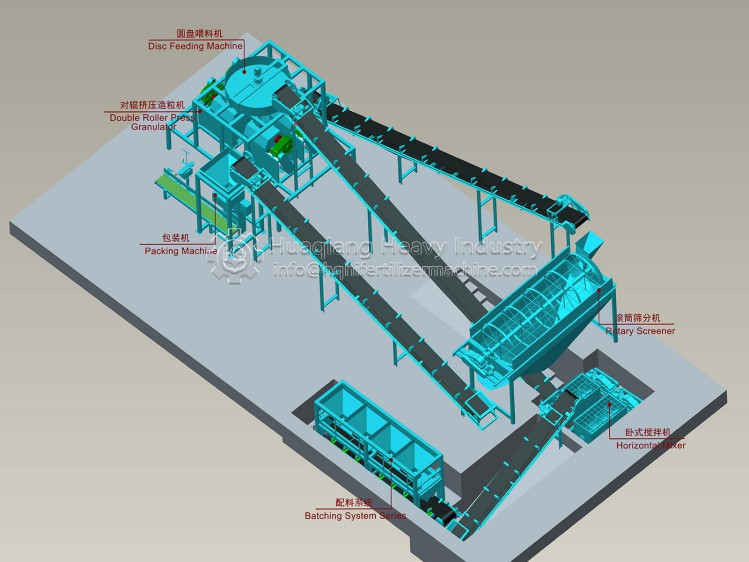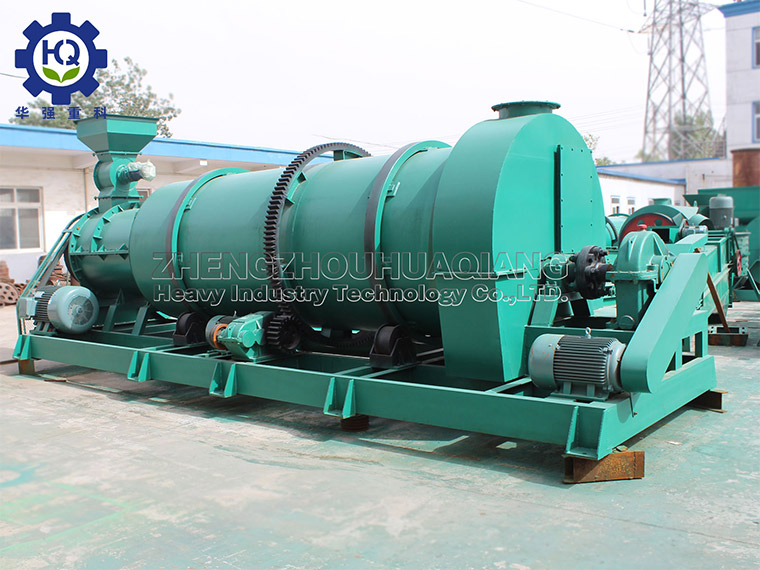The complete set of equipment for Organic fertilizer production line is a kind of equipment that uses chicken and pig feces as the main raw materials, adds a certain amount of nitrogen fertilizer, phosphorus fertilizer, potassium fertilizer, magnesium sulfate, Iron(II) sulfate and other substances, uses rice bran, yeast, soybean meal and sugar fermentation for a certain time as biological bacteria, and produces biological fertilizer by mixed fermentation under the effect of sulfuric acid..jpg)
The process flow of the Organic fertilizer production line is as follows: Manure raw materials (animal dung, domestic garbage, withered branches and leaves, biogas residue, waste bacteria, etc.) are fermented and then enter the semi wet material grinder for grinding, and then add elements such as nitrogen, phosphorus and potassium (pure nitrogen, Phosphorus pentoxide, Potassium chloride, ammonium chloride, etc.) to make the mineral elements contained reach the required standards, and then there is a mixer for mixing, and then enter the granulation mechanism to granulate, and dry after coming out, Sieve through a screening machine, package qualified products, and return unqualified products to the granulator for granulation.
Equipment process of chicken manure Organic fertilizer production line:
1. The slot type tipping machine, or mobile tipping machine, does not limit the site. The slot type tipping machine needs to build a slot (the length and width of the slot are planned and designed according to the actual size of the site), which is cleaner, healthier, and more environmentally friendly. Materials can be directly stacked in the fermentation tank. With a slot type tipping machine, multiple fermentation tanks can be flipped and fermented through a transfer car.
2. The fermented Manure is moved to the semi-finished product stacking area with a forklift, and the fermented Manure is thrown over by the dumper to facilitate the next step of processing and production every day.
3. The screening machine is used to screen the fermented Manure and sort out the large blocks and sundries in it for further crushing and packaging.
4. The grinder is used to sort out the large sundries and stones in the screened Manure and then crush them, so as to ensure the beauty and quality of the product.
5. The premixing machine can premix the screened and crushed Manure to ensure the stability of product quality, and at the same time, it plays a mixing role in the production of special fertilizers and various compound fertilizers when adding fertilizers and trace elements.
The medium-sized Manure production line with an annual output of 30000 to 50000 tons is the need of developing a circular economy, building a resource conserving and environment-friendly society, conforms to relevant national industrial policies, is conducive to the sustainable development of the company’s production, and can promote the company’s production on the right track of modernization, scale and standardization.

.jpg)
.jpg)



.jpg)
.jpg)
